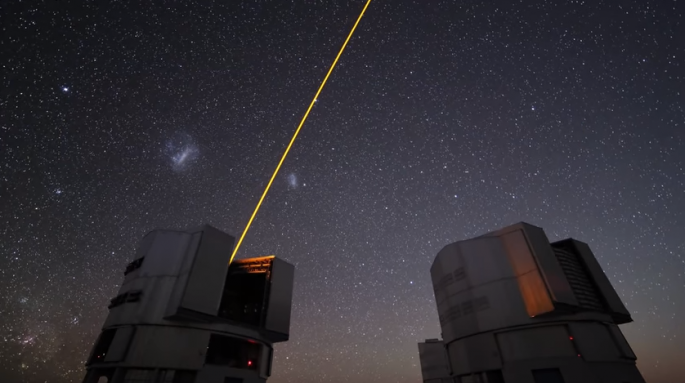The European Southern Observatory (ESO) has signed an agreement with the Breakthrough Initiatives to adapt the Very Large Telescope (VLT) instrument to search alien life. ESO is an international research organization which is planning to turn on its giant telescopes to become a more superior planet hunter. Their mission is to find and research earth-like planets around Alpha Centauri, which is the closest star outside the Solar System.
It will be fitted with new technology so it can see planets hidden by the glare of nearby suns. Experts believed that the Alpha Centauri may be disguising planets which could fit for human and alien life, Space reported.
According to Daily Star, observing these objects in mid-infrared can help in decreasing the huge gap in brightness between a planet and its host star. However, stars are still super bright in mid-infrared. That is why the telescope's VISIR instrument will need to add a few upgrades and to be sensitive enough to pick up planets around the two remaining Sun-like stars in the system, Alpha Centauri A, and B.
Meanwhile, the VLT's Imager and Spectrometer for mid-Infrared (VISIR) is an instrument that collects a kind of radiation given off by heat and invisible to the naked eye. It's like an infrared goggle that allows soldiers to see warm objects at night while VISIR lets the VLT see hot stars and warm planets against the coldness of space.
While looking at the star systems in the infrared spectrum, it greatly reduces the brightness gap between stars and planets, but planets are still quite a bit cooler than their hosts, which remain millions of times brighter. As things stand now, in spite of being able to theoretically detect car headlights as far as the moon, the VLT is not quite up to the challenge.
It will still take a couple of years to complete the VLT's upgrade and will focus on a tune-up of the telescope's VISIR instrument. The said instrument is an imaging tool that observes celestial objects in the mid-infrared, and also a type of light that cannot be seen but is associated with the emission of heat. It is tough to look at the planets in the visible light spectrum because of the intense light from a star can overpower the faint light of nearby planets.



























